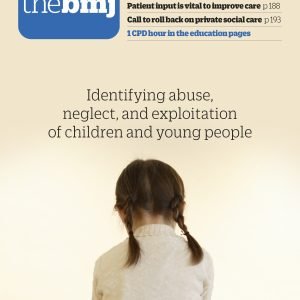
Half of young adult patients treated in emergency departments in three urban hospitals across the country reported experiencing violence either as a victim or aggressor, including firearm violence, in the six months prior to seeking treatment, according to a University of Michigan study.
Researchers surveyed and documented the experiences of more than 1,500 patients ages 18 to 24 who entered Level 1 trauma centers in Philadelphia, Seattle and Flint, Michigan, between July 2021 and May 2023. While half of the patients said they had experienced some form of violence, about 14% specifically reported threats involving guns or shootings, either as a victim or aggressor, and 6% reported having been shot or shooting someone else.
The findings are published in the journal Preventive Medicine.
The study went beyond questions of violence and found that drug misuse, mental health symptoms, firearm carrying, violence or retaliatory attitudes, family conflict and prosocial behaviors focused on helping or benefiting others were associated with firearm assault. Additionally, more than half of participants self-reported high-risk substance use and screened positive for post-traumatic stress disorder and depression or anxiety, or both—higher than that of the general population.
All are factors that should be taken into consideration when screening for future violence, the researchers say.
“These findings update previous ED-based studies of violence epidemiology and suggest there are other important factors associated with firearm assault experience,” said Jason Goldstick, research associate professor of emergency medicine and co-director of U-M’s Institute for Firearm Injury Prevention’s Data and Methods Core.
Urban emergency departments can be a vital touchpoint for young people at risk of violence, according to the study, which cites prior research establishing that young people receiving emergency care for violence-related injuries are at substantial risk for violent reinjury, with more than a third returning within two years. Nearly a fourth of those receiving emergency care for other reasons returned within a year.
“Our results point to other significant service needs of young adults entering the ED,” Goldstick said. “Taken together, this new data shows it is possible to characterize those at highest risk and leverage that information to inform intervention development and efficiently disseminate resources.”
The study, part of the SPARK (Screening to Predict Young Adults at Risk for Firearm Violence) project was led by researchers from the U-M Institute for Firearm Injury Prevention. SPARK seeks to evaluate the impact and efficiency of the SaFETy score, a screening tool used in emergency departments to predict future firearm violence risk.
The SaFETy (Serious fighting, Friend weapon carrying, community Environment, and firearm Threats) score was developed at U-M, and is the only resource of its kind. It uses four items and a 10-point scale to specifically identify firearm violence risk among young adults and youth: 1) frequency of fighting behaviors, 2) number of friends who carry weapons, 3) frequency of hearing gunshots in their neighborhood and 4) frequency of experiencing firearm violence threats
“Violence, including firearm assault, is common among young adults entering urban EDs, and is associated with several psychosocial facto,” Goldstick said. “High rates of substance use and mental health symptoms underscore this as a high-need population. Leveraging this information could help tailor interventions and optimize resource allocation.”
More information:
Jason E. Goldstick et al, Firearm violence and associated factors among young adults presenting to emergency departments in three cities: Baseline results from Project SPARK, Preventive Medicine (2024). DOI: 10.1016/j.ypmed.2024.108124
Citation:
Refining tools that spot risk of violence in young adults in urban emergency rooms may save lives (2024, November 20)
retrieved 20 November 2024
from https://medicalxpress.com/news/2024-11-refining-tools-violence-young-adults.html
This document is subject to copyright. Apart from any fair dealing for the purpose of private study or research, no
part may be reproduced without the written permission. The content is provided for information purposes only.








